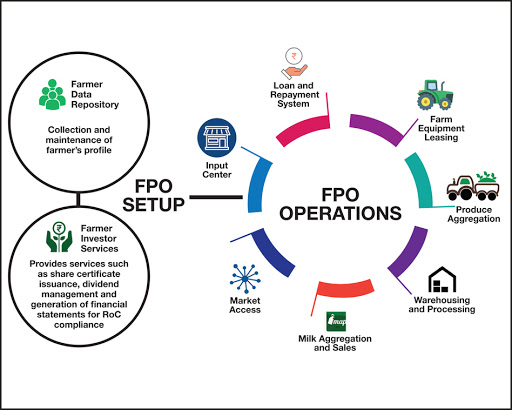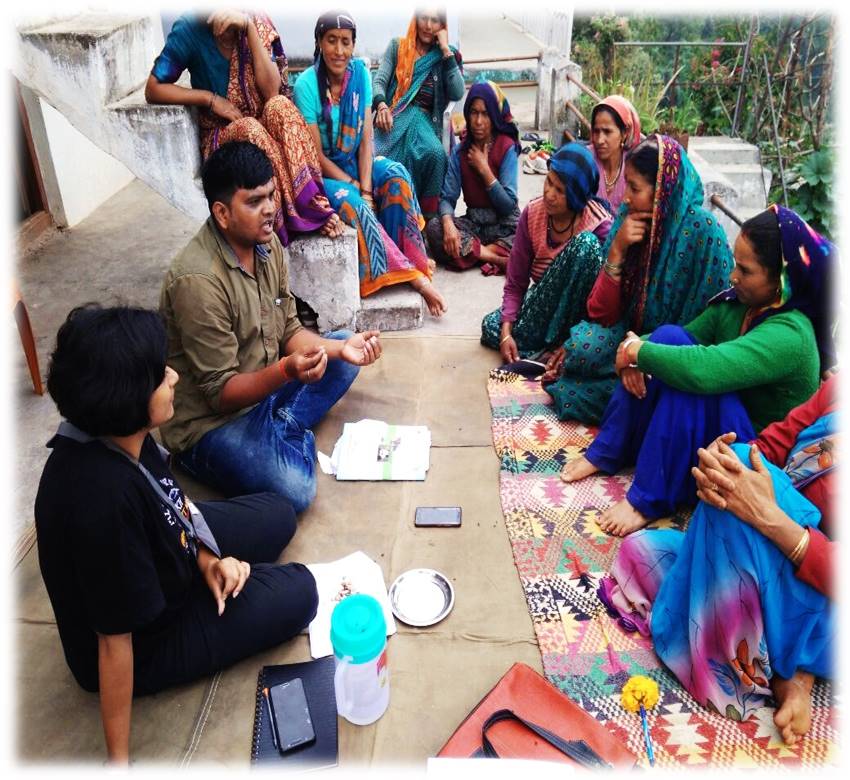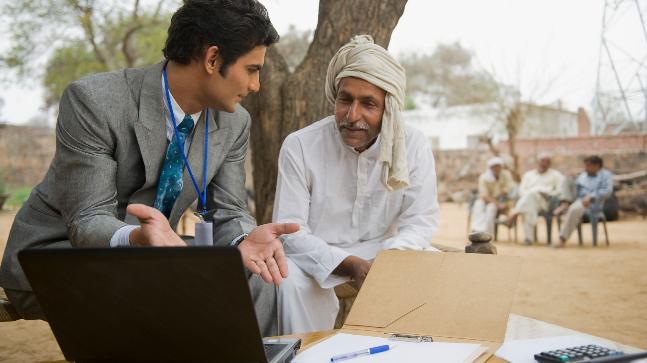- Domestic demand for ready-to-consume food products is increasing in most low-income countries because of urbanization and a growing middle class. International supermarkets are rapidly expanding into these markets. Moreover, high-income consumers increasingly prefer organic, natural ingredients in everything from food to cosmetics—and this trend shows no signs of reversing anytime soon.
- The market for value-added agribusiness products is on the rise.
- Each additional job in agro-processing creates 2.8 more jobs in the wider economy.
- Each agro-processor purchases from numerous smallholder farmers.
- Smallholder farmers often lose 50 percent of their harvest from seasonal gluts.
- Domestic demand for ready-to-consume food products is increasing because of urbanization and a growing middle class. International supermarkets are rapidly expanding into markets. Moreover, high-income consumers increasingly prefer organic, natural ingredients in everything from food to cosmetics—and this trend shows no signs of reversing anytime soon.

- Agro-processing refers to the addition of value to raw agricultural material through product transformation; postharvest grading, sorting, washing, and packaging; and storage and distribution.
- The middle segment of value chains—including processing, logistics, and wholesale functions—makes up 30 to 40 percent of the total value added. Therefore, growth in the agro-processing industry creates opportunities to reduce poverty and transform the economy.
- The global food, beverage, and grocery industry was estimated to be worth $7.8 trillion in 2015, or about 10 percent of the world’s gross domestic product, according to Plunkett Research. Today, developing countries consume about 58 percent of processed foods.
- By 2050, this figure is expected to climb to 72 percent, driven primarily by the growing influence of Western culture, increase in consumer purchasing power, and rapid urbanization. The urban population in developing countries is expected to double to nearly 4 billion by 2020.
- Much of the processed food currently consumed in developing countries is imported. Local producers are well positioned to reach these local markets, as well as regional markets, which offer limited barriers to entry and similar consumer preferences.
Agro-processing offers new market opportunities
- Investment in agro-processing generates demand for packaging, transportation, and agricultural products, which in turn generates demand for agricultural inputs, such as fertilizer, seeds, pesticides, and farm equipment. Therefore, agro-processing has a multiplier effect along the supply chain.
- Investment in agro-processing can also improve women’s economic empowerment, as women make up the majority of the workforce in the agro-processing sector. Women produce between 60 to 80 percent of food in most developing countries and are responsible for half of the world’s total food production.
Agro-processing promotes job creation and inclusive growth.
- A growing agro-processing industry can greatly reduce postharvest losses by transforming perishable produce into more shelf-stable differentiated products. Farmers often lose between 20 to 80 percent of their yields postharvest. Demand from agro-processors would offer a ready market—and thus income—for these yields that would otherwise go to waste.
- The Needs of Small and Medium Agro-Processing Enterprises
- Why do so few small and medium agro-processing enterprises grow to become profitable, competitive businesses?
- Entrepreneurs face a number of challenges, including limited access to finance, appropriate technology, business services, and professional networks.
- Small and medium enterprises require a diverse array of financial and non-financial services to improve productivity and accelerate growth.
Agro-processing reduces postharvest losses
- It Connects promising agro-processing enterprises with the knowledge, capital, and markets they need to grow.
- It Develops business models to connect entrepreneurs with stakeholders along the supply chain, including farmers, industry, suppliers, and financiers.
- It Demonstrates the significance of the agro-processing industry and inspires entrepreneurs and agribusiness stakeholders to take action.
- Agriculture in India is predominantly production oriented confined in large number of fragmented small holdings and plays a pivotal role in the Indian economy.
- It provides employment to around 56 per cent of the Indian workforce, contributes to overall growth of the economy and reduces poverty by providing employment and food security to the majority of the population.
- However, due to highly fragmented, scattered and heterogeneous landholding, rising cost of cultivation and limited access of small/marginal farmers (SF/MF) to public resources and markets, the small holding based agriculture has gradually become unviable.
- The limited production quantities, lack of farmers’ access to public resources, quality inputs, credit facility, modern technologies, etc. and frequent crop failures, lack of assured market, income safety and poorly developed supply chain, has resulted in high dependency of farmers on the exploitative intermediaries and local money lenders.
- Small and marginal farmers constitute around 85% of the total land holding and hold around 44% of the land under cultivation.
- Inadequate farming and extension services and low level of technology adoption.
- Lack of capital and poor business skills
- Low income due to poor infrastructure and low market efficiency
The above situation calls for major structural reforms and transformational initiatives towards the revitalization of Indian agriculture both, by way of stepping up investments for productivity enhancement as also reforms in agricultural marketing and post-harvest agri logistics for boosting agricultural growth. In this context, a sustainable solution lies in collectivization of agricultural produce and value addition/ marketing by achieving the economy of scale and creating commodity-specific agri value chains with participation of agri entrepreneurs and primary producers on the equitable terms.
- Cost of production can be reduced by procuring all necessary inputs in bulk at wholesale rates
- Aggregation of produce and bulk transport reduces marketing cost, thus, enhancing net income of the producer
- Building the scale through produce aggregation enables to take advantage of economies of scale and attracts traders to collect produce at farm gate.
- Access to modern technologies, facilitation of capacity building, extension and training on production technologies and ensuring traceability of agriculture produce
- Post-harvest losses can be minimized through value addition and efficient management of value chain.
- Regular supply of produce and quality control is possible through proper planning and management.
- Price fluctuation can be managed; if there are practices like contract farming, agreements, etc.
- Easy in communication for dissemination of information about price, volume and other farming related advisories.
- Access to financial resources against the stock, without collaterals.
- Easy access of funds and other support services by the government / donors / service providers
- Improved bargaining power and social capital building.

- SHGs or Self-Help Groups are exclusive groups started primarily to empower women in rural and suburban areas, make them economically independent and help them contribute to the socio-economic development of the nation.
- While there has been lots of controversy regarding the origination of Self Help Groups, the majority of the folks seem to agree that the microfinance movement played a huge role in it.
- Prof. Muhammad Yunus, the famed economist of Bangladesh, started the microfinance movement with a profound vision of eradicating poverty from the world by promoting women empowerment. Being a founder of the Grameen Bank, even today he is hailed widely as the “Father of Microfinance Industry.”
- With the new surge of confidence and awareness ingrained through the SHG training, there has been a vast improvement in their involvement with regards to health, education and several social sectors. In addition to this, the mobility of women in public domain has increased remarkably.
- The development of Micro-enterprises has been adopted widely as an anti-poverty strategy in most of the developing countries. Micro enterprises have become a powerhouse of economic growth and equitable expansion of the country.
- The SHGs have bridged several gaps in the caste system, the male dominance and domestic violence have declined at an impressive rate owing to measures carried out for gender-equality. There have been changes in the constitution as well, the panchayat raj system which offered 50% seats to women candidates is a whopping step towards creating an anti-biased inclusive nation.
- SHG owned businesses are the fastest growing divisions of the micro enterprise industry as the support program strives to offer people a few modest means to kick start their entrepreneurship journey. From being presented with the opportunity to manage a major tourist destination for the first time to manufacturing unique products which win accolades for their exceptional quality.
Social Impact
- Emancipates women from the vicious male dominance
- Enhances the social status and respect for women
- Improves the Livelihood of people in rural areas
- Enables women to influence the decision making process within household and communities
Economic Impact
- The Social mobility aspect encouraged by SHGs ensures that the society steers clear of the pathological condition of social decaying due to illiteracy, and ignorance. It promotes the formation of micro-enterprises to facilitate eradication of poverty through income generation and employment opportunities.
- Encouraging the spirit of entrepreneurship by offering income generation loans
- Alleviating poverty through income generation and employment opportunities
- Micro-enterprises act as a catalyst for the formation of social capital in the Nation.
- Addressing the existing problems in a community like drinking water issues, and serve as the ‘face of development’ to resolve them.
- Taking the initiative to organize social upliftment activities such as village cleaning drives, installing community taps, organizing a protest to remove liquor shops located near schools, religious places, etc.

- Achievement motivation.
- Knowledge related to supporting agencies and schemes.
- Opportunity identification and guidance.
- Preparation of project reports/profiles.
- Management of resources (men, material, money).
- Marketing aspects.
- Book-keeping/Accounting.
Access to Capital
- Poor credit.
- Lack of collateral.
- Lack of trusted lenders.
- High interest rates.
Access to Labor
- Rural areas aren’t typically teeming with a wide array of industries, and this lack of business diversity limits the economic opportunities available to entry-level workers. As a result, college graduates and other young adults hoping to find well-paying jobs that suit their skillset look for work outside their small-town communities. This, in turn, leaves many rural business owners struggling to find qualified, experienced and well-educated employment prospects.
Access to Connectivity
- Although telecommunication companies have made great strides in improving access to broadband for rural communities over the years, still do not have access to a high-speed connection. This is a big problem. Limited access to high-speed internet is a significant challenge for rural small businesses. Not only does stable connectivity lead to growth, it also helps businesses recruit and retain top talent, maintain steady supply chains and promote goods and services.
